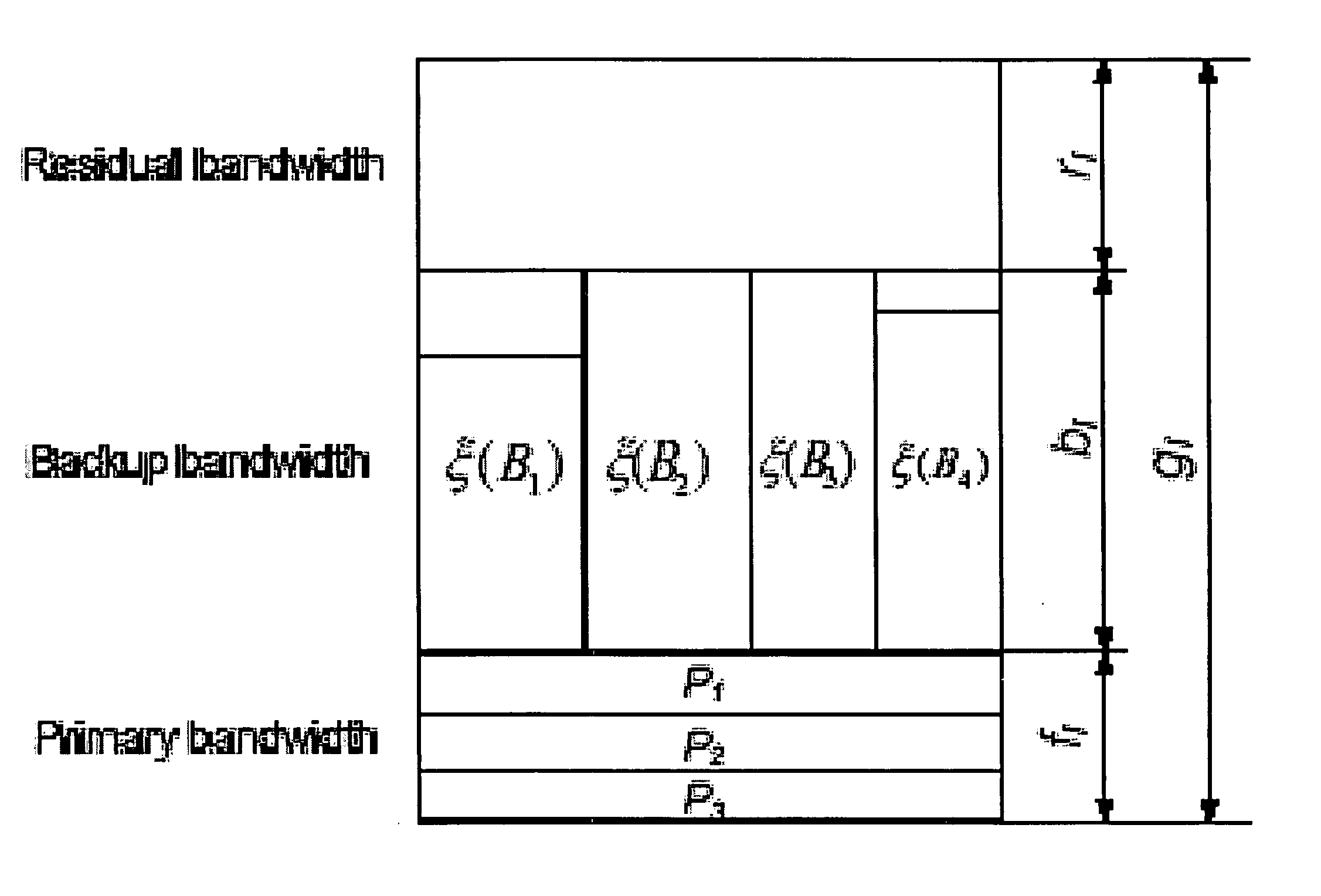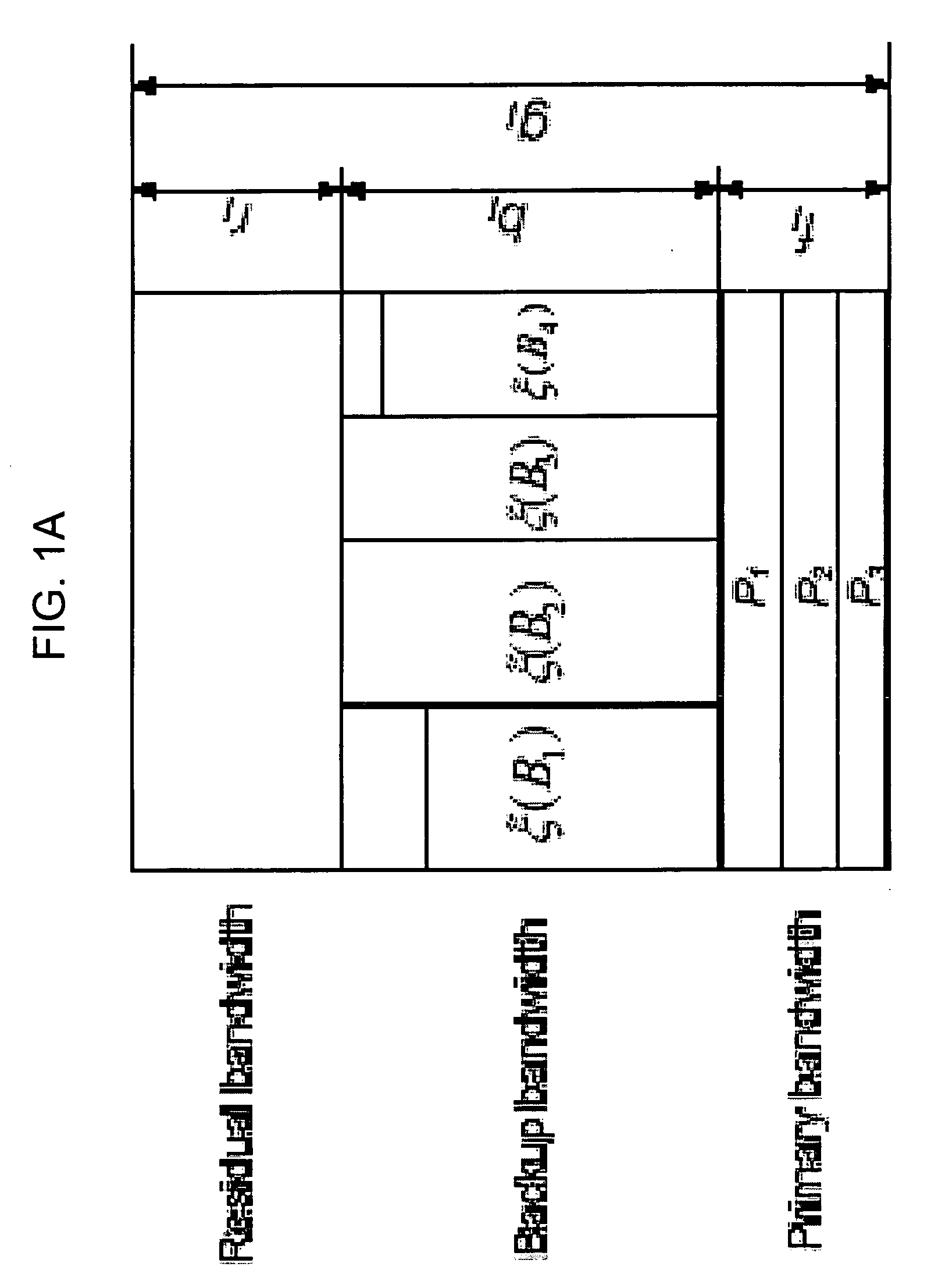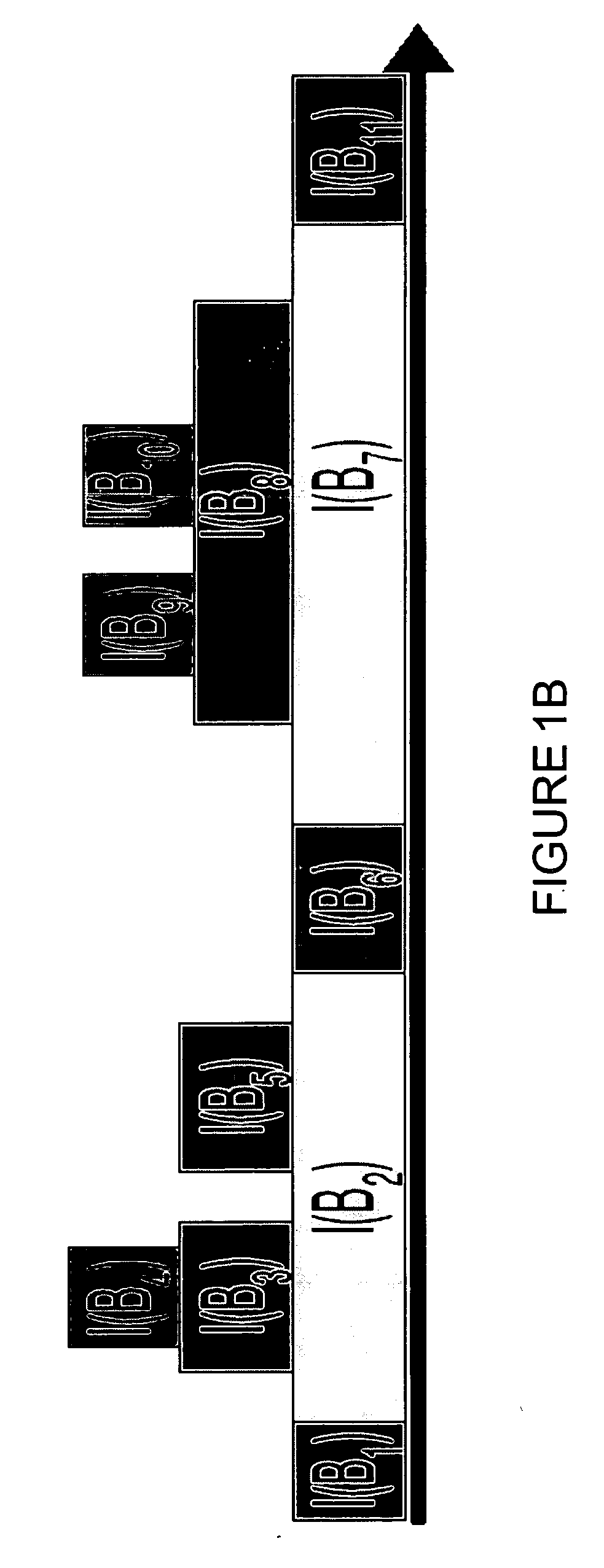Method and system for shared backup allocation in networks based on partial information
a technology of partial information and network backup, applied in the field of communication networks, can solve the problems algorithm does not provide any guarantee on the quality of solutions, and is difficult to achieve fast recovery at the expense of low network utilization ra
- Summary
- Abstract
- Description
- Claims
- Application Information
AI Technical Summary
Problems solved by technology
Method used
Image
Examples
example 3
[0092]FIG. 1B demonstrates the inner domains of bridges in R. Bridges B2, B3, B4 and B5 form a superbridge, which, in turn, includes a superbridge formed by bridges B3 and B4.
[0093] The superbridge consists of the leading bridge BH and the set of bridges (Possibly even superbridges) nested within it. e.g., in FIG. 2A, BH is a leading bridge (outer bridge). There is a nested superbridge between v1 and v4, because it has bridges, with nesting. The bridge v1 to v4 is a leading bridge, with the bridge v2 to v3 nested therein.
[0094] Dynamic Programming Algorithm
[0095] Problem BS* has an optimal substructure property. This property can be used in order to establish a dynamic programming algorithm for this problem, suitable for an automated implementation on a computer processor. Given an instance (G,{circumflex over (P)},d) of Problem BS*, the algorithm determines the optimal superbridges for protecting every interval I of {circumflex over (P)}, beginning with intervals of length 1, th...
example 4
[0101]FIG. 2A depicts an example of a superbridge of an interval I={s(I)=v0,v1 . . . ,t(I)}=v7. Here, the leading bridge BH protects all links l ∈ I with fl≦3.
[0102] The above process determines the optimal superbridge for each interval I of P. The optimum solution R is partitioned into a set of superbridges, each protecting an interval I of {circumflex over (P)}. Thus, R can either include a single superbridge that protects the entire path {circumflex over (P)} or comprises several superbridges. Note that the minimum cost of a superbridge that protects the entire path {circumflex over (P)} is already known. In order to compute the set of superbridges that protects each link l ∈ {circumflex over (P)} of minimum total cost, a procedure such as Procedure FIND is invoked for {circumflex over (P)} and ζ=0. A formal description of the algorithm appears in Tables 1 to 3.
[0103] The above-described process may be implemented on a variety of computer platforms in any of a variety of progra...
PUM
 Login to View More
Login to View More Abstract
Description
Claims
Application Information
 Login to View More
Login to View More - R&D
- Intellectual Property
- Life Sciences
- Materials
- Tech Scout
- Unparalleled Data Quality
- Higher Quality Content
- 60% Fewer Hallucinations
Browse by: Latest US Patents, China's latest patents, Technical Efficacy Thesaurus, Application Domain, Technology Topic, Popular Technical Reports.
© 2025 PatSnap. All rights reserved.Legal|Privacy policy|Modern Slavery Act Transparency Statement|Sitemap|About US| Contact US: help@patsnap.com



